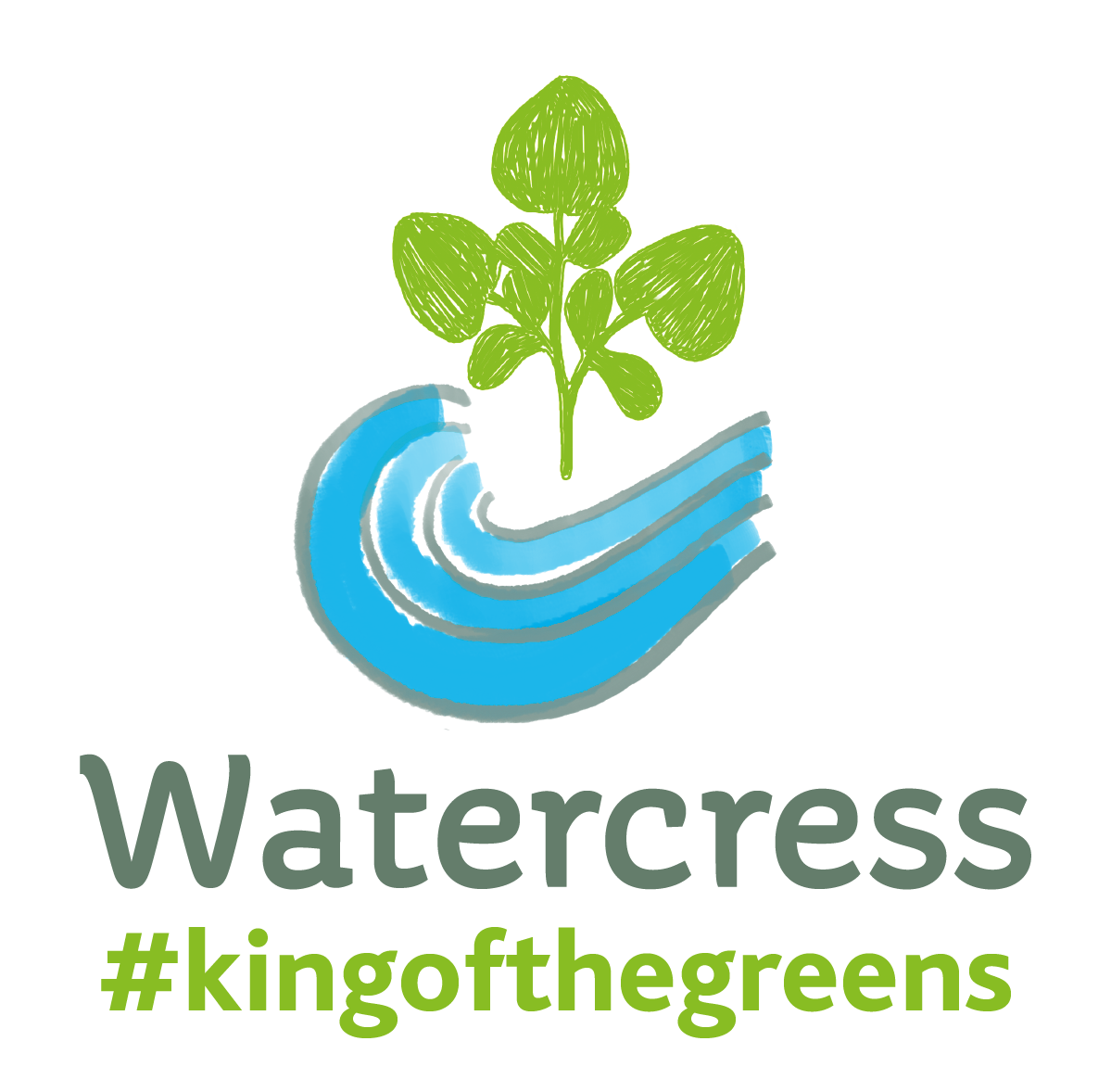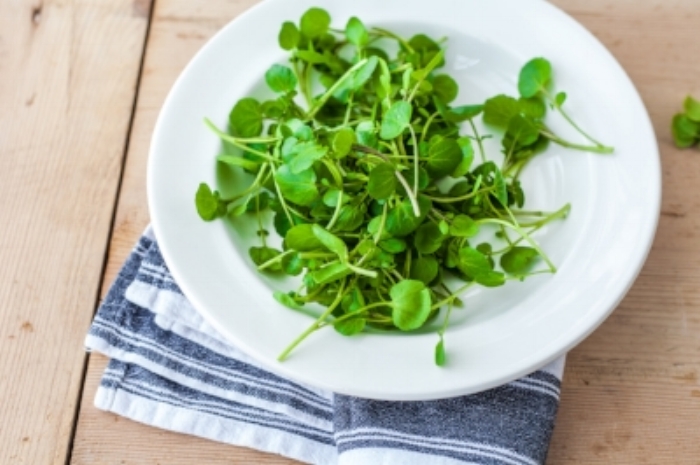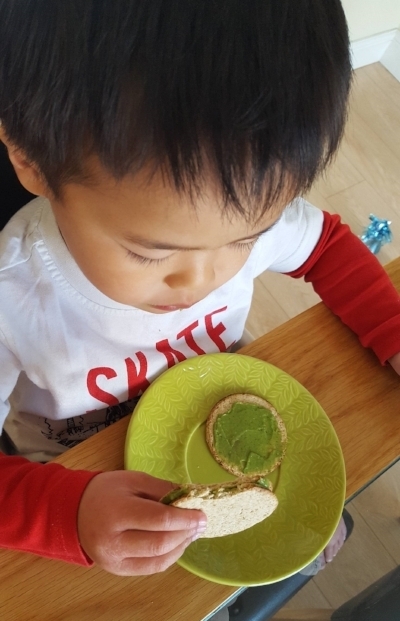Watercress to soothe eczema EPISODE 2
I am Melissa Chan, a mummy anxious to improve and maintain healthy skin on my little boy who has eczema. Unsatisfied with the temporary relief his prescribed steroid creams offered plus the potential side effects of prolonged use, I have been exploring alternative solutions.
I discovered that certain foods could be triggering the eczema flare ups, so I eliminated or reduced them in my son’s diet. There are definite signs of improvement with a less itchy, grumpy toddler on my hands and his irritated broken skin has finally begun to heal.
However, I was concerned that he was not receiving adequate nutrition from the foods left that he enjoyed and would eat, so having heard about the nutritional benefits as well as the anti-inflammatory properties of watercress, I signed up to the Watercress Ambassador programme. We have just completed our second week finding ways to introduce more watercress into my son’s diet and he and I are delighted with the outcome.
It’s a wrap!
But first, here are 5 Facts about Eczema
ORIGIN: The word eczema comes from the Greek word “ekzein” which means “to boil”
WIDESPREAD: In the UK, 1 in 5 children and 1 in 12 adults have eczema
TYPES: There are eight different types of eczema resulting in different skin reactions
RISK: A person’s risk of developing the problem increases if he or she has a family history of eczema or allergic conditions such as asthma and hay fever
CURE: Unfortunately, there are no guarantees that a child will grow out of eczema. However, research has shown that 65% of children will be free of eczema by the time they are 7 years old, and 74% by the time they reach 16 years of age
FOOD: Children under 5 are at greater risk of having their symptoms worsened by food allergies and it’s thought that in about 30% of children with eczema, food may be one of the causes
There is growing evidence that certain foods cause a more severe flare up of eczema, for my son it is citrus fruit, dairy, eggs, shellfish, red meat, bread and fried or baked food, while other foods appear to actively help lessen the symptoms, including watercress.
4 WAYS WATERCRESS MIGHT HELP WITH ECZEMA
ANTI-OXIDANT: Beta Carotene acts as a powerful antioxidant in the body and is especially important for healthy skin as it scavenges and neutralises free radicals. The richest sources of beta-carotene are colourful fruit and vegetables like carrots but also green leafy veg such as watercress
ANTI-INFLAMMATORY: Watercress has cleansing and anti-inflammatory properties that can help relieve inflamed patches of sore skin
HEALING: Vitamin C is essential for healthy skin as it helps produce collagen, a protein needed for wound healing. It is also an important nutrient for the immune system which fights off invading bacteria - watercress is a good source of vitamin C, in fact, gram for gram it contains more vitamin C than and orange
DAMAGE PREVENTION: Vitamin E works with vitamin C and beta-carotene to prevent damage to skin cells from ultraviolet light. Vitamin E is a powerful antioxidant crucial for preventing free radical damage. Again, Watercress is an excellent source and contains more vitamin E than broccoli when compared gram for gram
See information on other foods that might help with eczema.
Health on a plate!
Here’s our ongoing personal journey with watercress, exploring the positive effect it is having on my little boy’s eczema.
Week Two, Day 1
Working on the success of last week’s avocado and watercress dip, I made a variation of it where instead off adding fried onions, I added a dash of Maggi liquid seasoning for an umami taste. I spread the dip in a tortilla wrap along with mini gem lettuce, roast turkey slices and sprigs of watercress. If the sprigs of watercress stayed hidden inside, they were not removed by my toddler. Overall, it was still a hit with the little one.
Later that day, for his snack I spread the leftover avocado watercress dip onto some oat cakes. Unimpressed by the prospect of his hands touching the green spread, it did not look promising. The solution - an oat cake sandwich by squishing 2 together! Hooray one happy toddler - resistance avoided!
Urghh Mum - What’s this?
That’s better!
For dessert, I made “ice cream”, I blended together frozen banana with a large handful of watercress. Conscious my little one was becoming fed up with the colour green, I added in 4 frozen strawberries despite the restricted diet he is on which included reducing citrus fruit.
This was a resounding success, I had one delighted toddler enjoying his “treat!” - long may the ruse continue! The “ice cream” had a hint of watercress flavour which took on a minty note when it was mixed with fruit, very refreshing!
Delicious!
Day 2
For dinner, I decided to experiment by steaming the watercress with salmon fillets, I wasn’t sure how it would turn out. I placed a large handful of watercress in a steamer, then placed the salmon fillets and another handful of watercress on top. The salmon took on a delicate watercress flavour and the watercress itself was sweet with its fiery and sometimes bitter taste removed. More importantly it was thoroughly enjoyed by my little one!
Steamed salmon with watercress
Day 3
For dinner, I made the same steamed fish dish I had made the previous night but with a slight difference: I steamed 3 types of fish - salmon, smoked haddock and plain haddock (from a frozen fish pie mix) then sprinkled on top some dried silver fish just before serving to add some crunch. This was a hit! My toddler enjoys variety and quickly gets bored with repetition, so I was delighted that with minimum effort I was able to maintain his interest.
Three steamed fish & watercress - a variation on a theme which my son loved
Week 2 into my son’s watercress adventure, I’m pleased with the progress: his skin is still steadily improving appearing less red and inflamed. Here’s to week 3!
WHAT IS ECZEMA?
It’s a common condition but for those fortunate enough not to suffer from eczema, there is a lack of understanding as to what it is. The explanation below is courtesy of the National Eczema Society website.
Eczema (also known as dermatitis) is a dry skin condition. It is a highly individual condition which varies from person to person and comes in many different forms. It is not contagious, so it can’t be caught from someone else. In mild cases of eczema, the skin is dry, scaly, red and itchy. In more severe cases there may be weeping, crusting and bleeding. Constant scratching causes the skin to split and bleed leaving it open to infection.
The skin provides a strong, effective barrier that protects the body from infection or irritation. Skin is made up of a thin outer layer, a fairly elastic one in the middle, and a fatty layer at the deepest level. Each layer contains skin cells, water and fats, all of which help maintain and protect the condition of the skin.
Healthy skin cells are plumped up with water, forming a protective barrier against damage and infection. Fats and oils in the skin help retain moisture, maintain body temperature and prevent harmful substances or bacteria from entering our bodies.
With eczema, the skin may not produce as much fats and oils as other peoples and so is less able to retain water. The protective barrier is therefore not as good as it should be. Gaps open up between the skin cells because they are not sufficiently plumped up with water.
Moisture is then lost from the deeper layers of the skin, allowing bacteria or irritants to pass through more easily. Some everyday substances contribute to breaking down the skin. Soap, bubble bath and washing-up liquid, for example, will remove oil from anyone’s skin, but with eczema the skin breaks down more easily, quickly becoming irritated, cracked and inflamed.
The Daily Mail reports that some research from Canada suggests that over use of certain chemical cleaning products may be adding to the problem by affecting bacterial cultures in children’s guts which is not only resulting in obesity but affecting their likelihood of developing eczema.
Catch up with EPISODE 1







